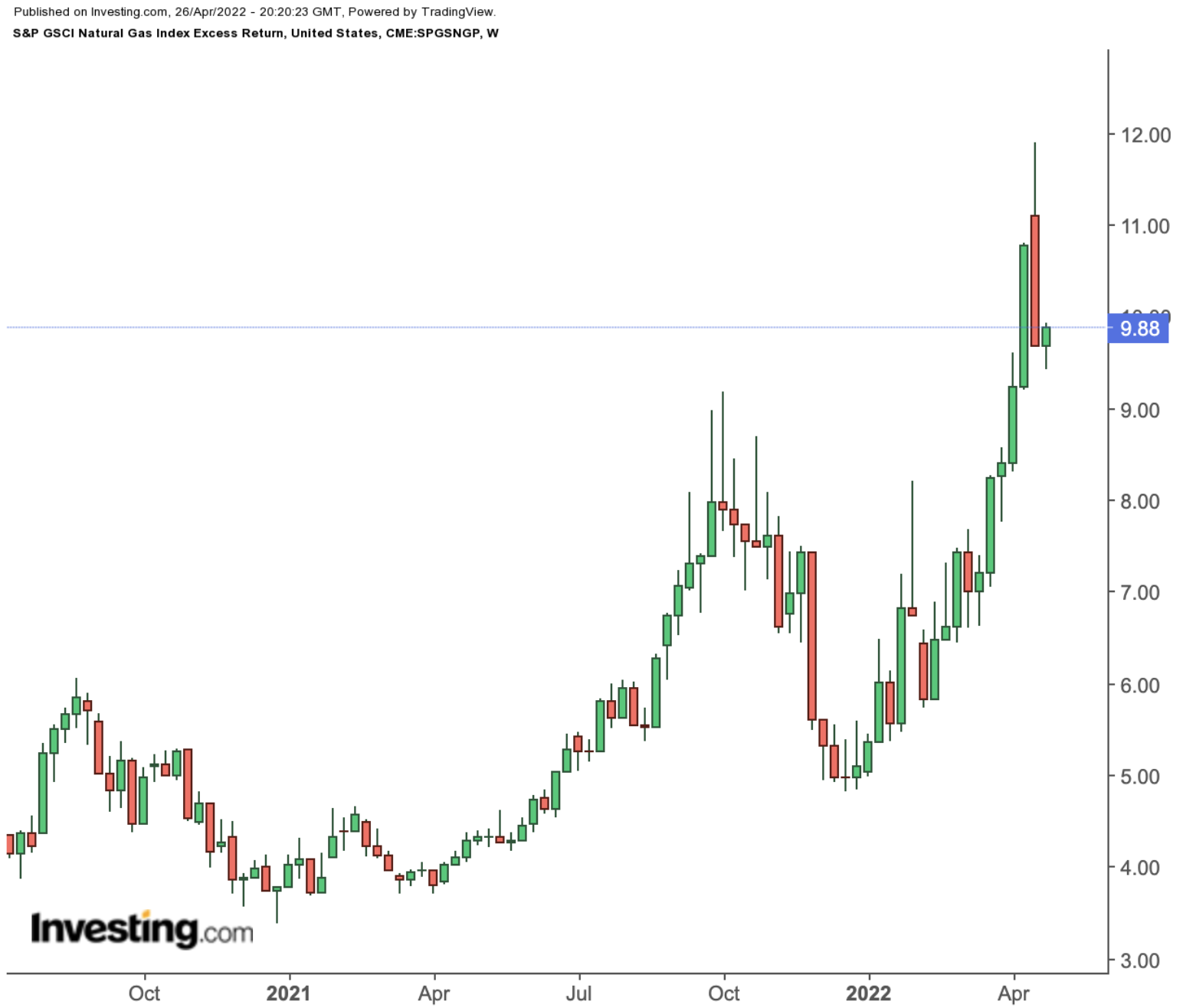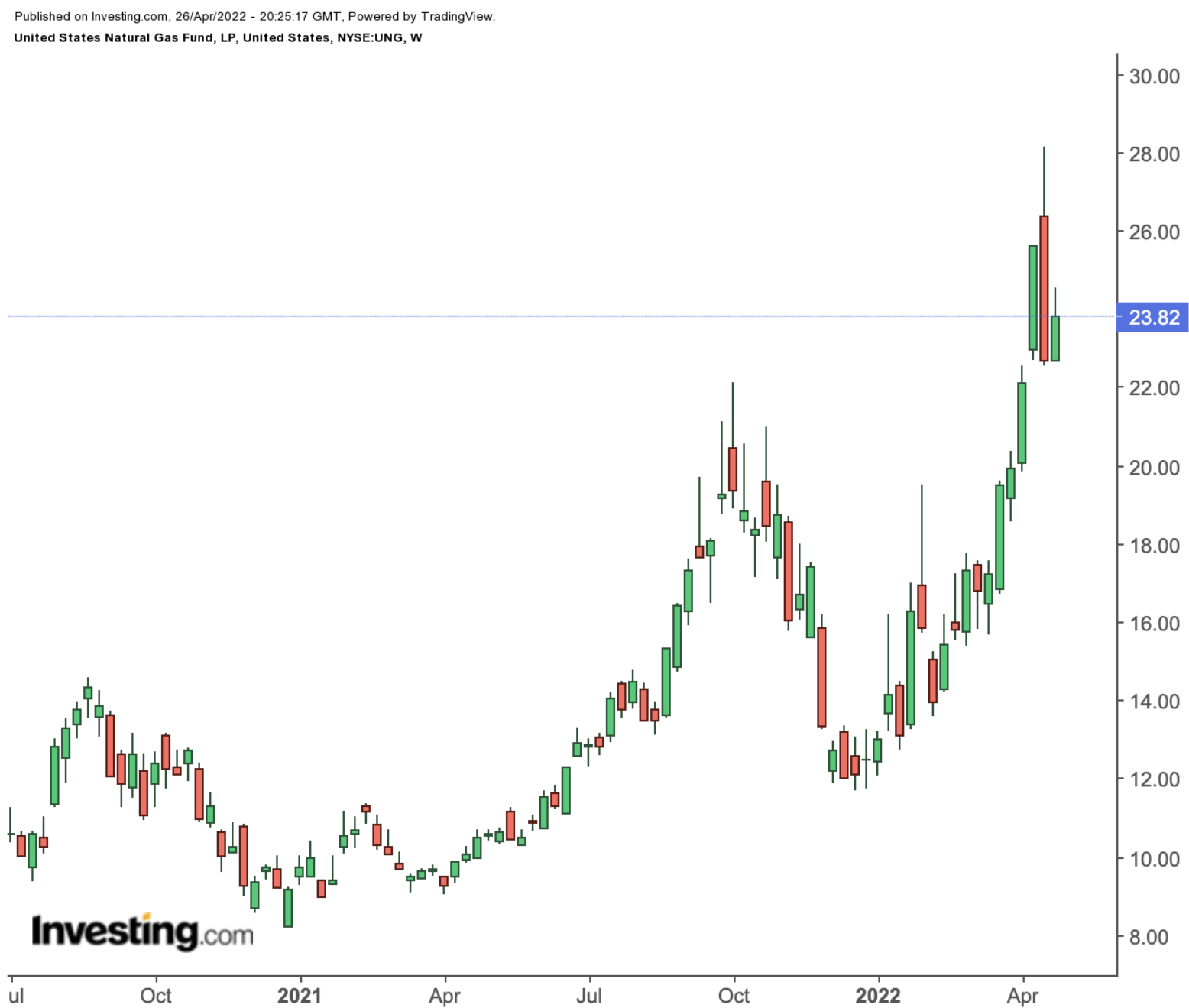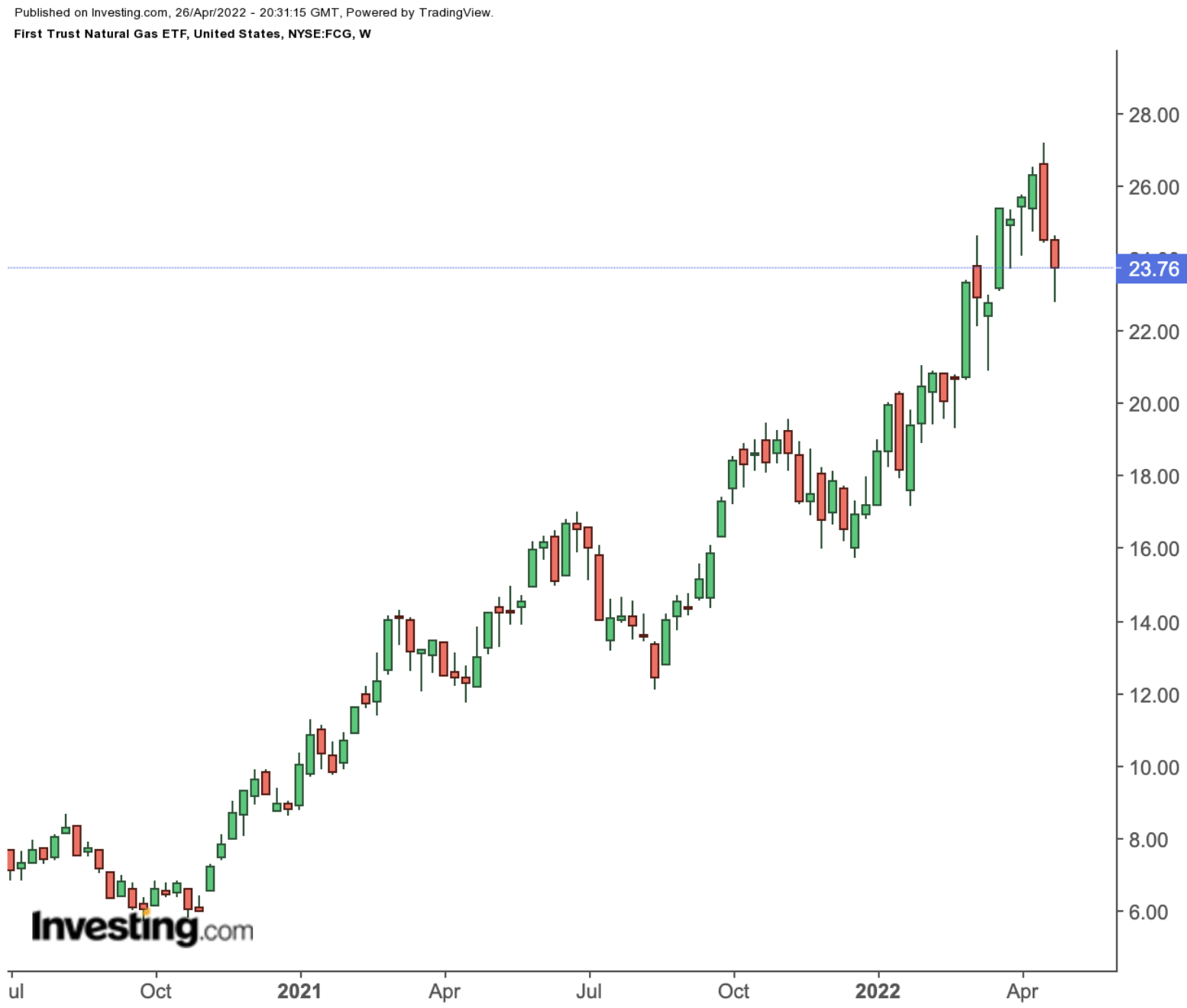Janux stock plunges after hours following mCRPC trial data
Natural gas has been one of the best-performing commodities of the year. Tailwinds have come from the war in Ukraine, cold weather in the US, and decreasing inventory levels of the energy commodity.
As we write, natural gas is trading at $7, roughly 4% below the multi-year levels seen recently. Meanwhile, the S&P GSCI Natural Gas Index is up around 93% since January and a whopping 140% over the past 12 months.

Recent metrics issued by the Gas Exporting Countries Forum (GECF) suggest:
“The share of natural gas in the energy mix will increase from 23% today to 27% by 2050.”
Therefore, despite the recent increase in price, the long-term demand outlook for the commodity remains strong. However, the price of natural gas is susceptible to short-term headwinds, such as the weather, economy, government policies, and various supply and demand imbalances.
For instance, the electric power sector is heavily dependent on natural gas in the US. Therefore, the widespread use of air conditioners could increase demand for the commodity in the summer months.
China is the largest importer of natural gas on the global demand side of the equation, while Australia is China’s largest supplier. However, the uptick in COVID-19 cases in China has recently dampened the demand.
Finally, Russia’s invasion of Ukraine is seeding further uncertainty regarding the supply and demand scene for commodities. Put another way, choppiness in the price of natural gas is likely in the weeks ahead.
Today’s article discusses two exchange-traded products (ETPs) that could appeal to bullish investors who want to energize their portfolios with natural gas assets.
1. United States Natural Gas Fund
- Current Price: $23.82
- 52-week range: $10.25 - $28.15
- Expense ratio: 1.35% per year
Our first discussion centers on the United States Natural Gas Fund (NYSE:UNG), which invests primarily in natural gas futures contracts. This commodity fund provides direct access to natural gas prices delivered at the Henry Hub, Louisiana, through derivative products. It was first listed in April 2007, and net assets stand at $421.4 million.

The underlying benchmark is the futures contract on natural gas traded on the New York Mercantile Exchange, NYMEX. Around two weeks before contract expiry, the fund rolls the derivative exposure into the next-month contract.
UNG has returned around 90.7% year-to-date (YTD) and 136.7% over the past 12 months. Interested readers should remember that derivative-based funds can suffer from contango, leading to negative roll yield (covered here). Thus, an ETP like UNG is more appropriate for short-term traders than for buy-and-hold investors.
2. First Trust Natural Gas ETF
- Current Price: $23.76
- 52-week range: $12.10 - $27.18
- Dividend yield: 1.59%
- Expense ratio: 0.60% per year
Our next fund is the First Trust Natural Gas ETF (NYSE:FCG). It invests in businesses that derive significant revenue from natural gas. It started trading in May 2007, and net assets stand at $726 million.

FCG, which tracks the ISE-Revere Natural GasTM Index, currently has 44 holdings. Around 40% of the portfolio is in the 10 leading energy stocks.
Among those are EQT (NYSE:EQT), Occidental Petroleum (NYSE:OXY), DCP Midstream (NYSE:DCP), Western Midstream Partners (NYSE:WES), Antero Resources (NYSE:AR), and Coterra Energy (NYSE:CTRA).
FCG, which hit a multi-year high recently, is up 38.3% this year. Trailing P/E and P/S ratios are 11.63x and 1.97x, respectively.
In the long run, we expect the natural gas price to remain hot. Therefore, interested readers could consider allocating part of a diversified long-term portfolio to an ETF like FCG.
